#squamate
Text

Louisiana Pine Snake (Pituophis ruthveni)
Family: Colubrid Snake Family (Colubridae)
IUCN Conservation Status: Endangered
Among North America's rarest snakes, the Louisiana Pine Snake's small population size is the result of its highly specific habitat requirements and the resulting sensitivity to human-driven habitat changes that comes with them; members of this species feed primarily on Baird's Pocket Gophers (a specific species of burrowing rodent,) and almost always live in abandoned Baird's Pocket Gopher burrows (often after having eaten the burrows creator,) and as such in areas where Baird's Pocket Gophers are not present Lousiana Pine Snakes cannot survive. Native to western Lousiana and eastern Texas, members of this species do best in pine forests (particularly those dominated by a specific species of pine, Pinus palustris, forests of which are noted to generally support high levels of biodiversity as a result of the loose canopies they form which allow many smaller species of plants to coexist with them,) and spend most of their lives underground, rarely travelling far from their stolen burrows. They emerge from their burrows mainly during the mid-day to hunt (targeting rabbits, frogs and other rodents when Baird's Pocket Gophers are scarce,) but otherwise remain concealed underground in order to avoid predation and unusually high or low temperatures; during the winter, when the weather becomes colder and prey becomes scarcer, they travel deeper into a Baird's Pocket Gopher burrow and hibernate until the early spring.
--------------------------------------------------------------------------
Image Source: https://www.inaturalist.org/taxa/29041-Pituophis-ruthveni
#Louisiana pine snake#snake#snakes#reptile#reptiles#zoology#biology#herpetology#animal#animals#herpetofauna#squamata#squamate#squamates#wildlife#North American wildlife#North American snakes
182 notes
·
View notes
Text

On a lovely evening 47 million years ago, Darwinius and Geiseltaliellus are forced to share their favourite lakeside tree. They do not particularly enjoy each other's company, but are unlikely to do something about it. Their tree has also become the grave of a couple of Titanomyrna infected with a cordycipitoid fungus, the giant ants spreading the fungus in their death grips. Meanwhile, a pair of Gastornis enjoys the evening Sun while a Eurohippus takes a drink, safe in the knowledge that these giant birds are herbivores. Archaeonycteris hunt insects above the lake, while various crocodylians hang out and get ready for the night.
#darwinius#geiseltaliellus#gastornis#eurohippus#titanomyrna#cordyceps#archaeonycteris#eocene#paleogene#paleoart#palaeoblr#my art#kopidodon#messel pit#adapiform#primate#mammal#corytophanid#lizard#squamate#bird#equid#perissodactyl#ant#insect#cw: bugs#cw: parasites#bat#crocodylian#i think that's everyone
58 notes
·
View notes
Text

Hisss
97 notes
·
View notes
Note
Hiiiiiiiiiiiiiiiiiiiiiiiiiii!!!!!!!!!!!!!!!!!!!!!!!! what's the thingy on your profile pic? My guess is somesort of creeeeture within amber, correct? If so, what kind of creeeeeture is it? it's got a funky head it's pretty cool
Also I just remembered I can color text on the tumble so yeah I'm having fun with that hope you don't mind
HHHHHHHHHHOIIIIIIIIIIIIIIIII
Thr creature is a chameleon! I didn't have a species in mind but after some research I guess it's a mix of the big crown of the Veiled chameleon and the angled jaw of a Panther Chameleon to get the arrow shape.


Panther Chameleon Skeleton by Exifia on Deviant art.
There was a hubbub a few years ago about an amber specimen containing a chameleon, but that was later proved to be an Albernapid amphibian calked Yaksha by Susan E. Evans.

So a few things inspired it, like Jurrasic Park abd some amber related news at the time. But I think the main inspiration was the power and golden eggs from Splatoon.

This was unintentional but I think it's transformative enough to be okay.
The bean shape was inspired by the famous "gummy bear" amber fossil from Slupsk, Poland.

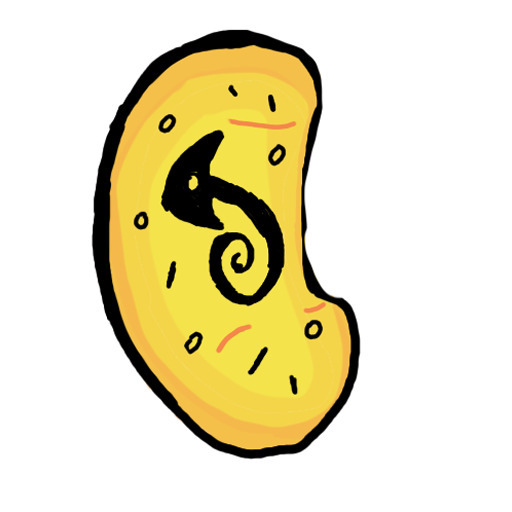
Sometimes, my mind conflates gummy bears and jelly beans lol.
Sorry if this is a bit rant-y, I try to keep track of where the inspiration for my art and designs comes from. I want to remake it at some point with cleaner lines and a better gradient, but I also like the more janky lines atm so we'll see when/if it happens.
Oh and I DON'T MIND THE COLOURS.
WWWHHHOOOOOOOOOOOOPPPPPP!!!!!!!
#Yaksha#Albenerpetid#Amphibian#Chameleon#veiled chameleon#panther chameleon#Squamate#amber#art#my art#gummy bean#profile picture#reptile
7 notes
·
View notes
Text
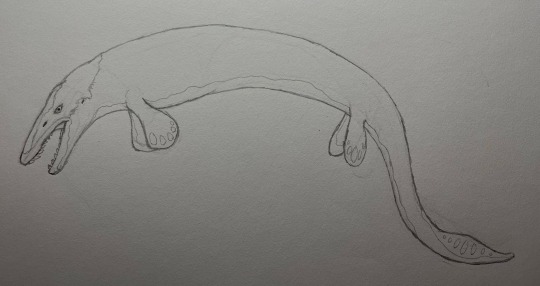
Clidastes propython was a mosasaur from the Late Cretaceous of the United States. Mosasaurs were a group of lizards closely related to varanids (monitor lizards) and snakes that rapidly evolved in the Late Cretaceous into large, fully aquatic predators. Clidastes is a transitional form in this rapid evolution, an example of the first fully marine mosasaurs that would give rise to more advanced forms like Mosasaurus.
11 notes
·
View notes
Text


*beep beep* Yupp,as Suspected… “Lizartd.”
#silly#funny#196#rule#r/196#sillyposting#ruleposting#shitpost#shitposting#animalposting#animal memes#zoology memes#zoology#herpetology#lizard#chameleon#namaqua chameleon#squamates#reptiles#biology memes#my posts
789 notes
·
View notes
Text

Exciting news: my podcast is back!
In 2018, Gabriel Ugueto (well known palaeo-artist and former herpetologist), Ethan Kocak (New York Times best-selling cartoonist and herpetoculturist), and I (a talkative herpetologist) decided that the world needed a herpetology-focused podcast that featured the latest big news in herpetological research, and took some deep, jargon-heavy dives into the nitty gritty of it all. So we started the SquaMates podcast.
We had a great deal of fun making the podcast, but in the wake of the panini, we struggled to find time for the show and coordinate recording schedules, and the show had to go on hiatus.
But now, after nearly two and a half years, we're back, and I venture to say we're better than ever! Hiral Naik, a snake ecologist from South Africa, has now joined us as a permanent co-host. Moreover, we're now recording and releasing the show in video on YouTube, as well as over normal podcast streams!
Episode 22 will drop on YouTube and podcast apps on Monday 12 February at 10:00 EST, 16:00 CET!
You can listen to the backlog at squamatespod.com, or on apple podcasts and other podcast apps.
I hope you enjoy the show!
354 notes
·
View notes
Text
Uncharismatic Fact of the Day
When handling members of the family Anguinae, it's important to be extremely careful! These reptiles are known as glass lizards, due to the fact that their tails will 'shatter' into many pieces when they feel threatened.

(Image: A western slender glass lizard (Ophisaurus attenuatus) by Daniel D. Fogell)
If you send me proof that you’ve made a donation to UNRWA or another fund benefiting Palestinians– including esim donations and verified gofundmes– I’ll make art of any animal of your choosing.
149 notes
·
View notes
Text
Mosasaurus!
Late Cretaceous. 83-66MYA.
They were one of the first mesozoic animals to be given a name, beating the first named dinosaur Megalosaurus by 60 years! (1764 for the first named Mosasaurus, 1824 for Megalosaurus, the first named Dinosaur)
#video#art#my art#paleontology#paleoart#science#not a dinosaur#also not a plesiosaur#mosasaurus#squamata#squamates#lizard#reptile#marine reptile
96 notes
·
View notes
Text
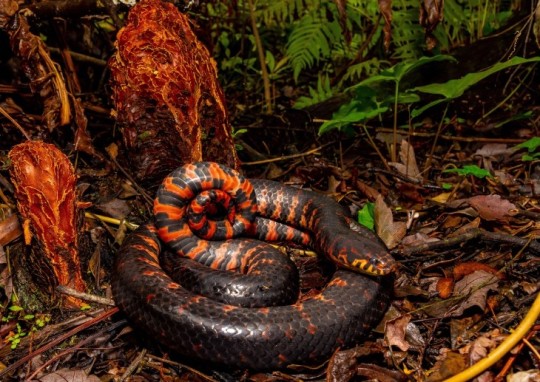
Mud Snake (Farancia abacura)
Family: Colubrid Family (Colubridae)
IUCN Conservation Status: Least Concern
Found mainly in rivers and swamps across much of the southeastern USA, the Mud Snake spends much of its life in the water, feeding primarily on large salamanders such as sirens and amphiumas and typically coming onto land only to bask, lay eggs or travel to other bodies of water during periods of drought. While they lack the venom that many aquatic snakes rely on to subdue prey, members of this species possess a large number of unusually long, curved teeth that aid them in catching slippery animals before swallowing them whole; when threatened they curl their bodies into tight coils and flash their striking red-striped bellies at perceived attackers, although as their teeth are made more for gripping than injuring and they lack venom, this is largely a bluff. Between October and November, when the weather in their native range becomes colder and their prey becomes scarcer, Mud Snakes enter a prolonged state of dormancy in muddy crevices or abandoned burrows, and after emerging again in the spring adults mate, with females laying clutches of over 100 eggs shortly afterwards, leaving them in wet, sheltered places where they will be kept warm and damp until they hatch roughly 60 days later.
--------------------------------------------------------------------------
Image Source: https://www.inaturalist.org/taxa/30106-Farancia-abacura
#mud snake#mudsnake#snake#snakes#zoology#biology#herpetology#animal#animals#wildlife#North American wildlife#herpetofauna#colubrid#reptile#reptiles#squamate#squamates
110 notes
·
View notes
Text

On the edge of a Miocene South American grassland, a group of Thoatherium is ambushed by a Phorusrhacos. They scatter, but the terror bird catches one of the litopterns, lifts it high up into the air, and SLAMS it down on the ground to kill it. Other nearby animals have mixed feelings about this situation. Tupinambis flees for its life, while Dryornis flies a little closer in case it can have a bit for itself. Hapalops and Astrapotherium are unbothered and have business of their own to take care of.
#phorusrhacos#thoatherium#terror bird#phorusrhacid#litoptern#cariamiform#bird#mammal#santa cruz formation#miocene#neogene#south america#autumn#tupinambis#lizard#squamate#dryornis#new world vulture#accipitriform#hapalops#ground sloth#pilosan#astrapotherium#astrapothere#my art#paleoart#palaeoblr#cw: animal death#cw: blood
77 notes
·
View notes
Text
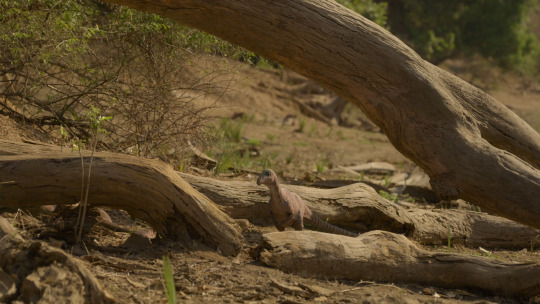



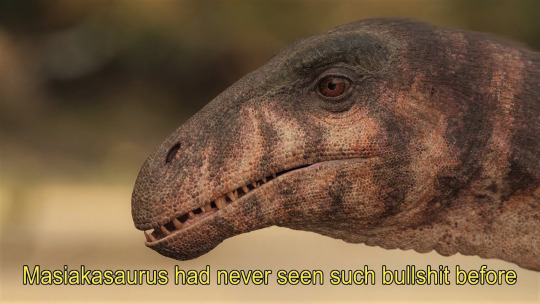
#masiakasaurus#abelisaur#theropod#dinosaur#prehistoric planet#coproliteposting#poor masiakasaurus#they need to watch out for ambush predators#madtsoia#snake#squamate#cw: snakes#in looking up this snake to get the spelling right i found out it survived the k-pg extinction!#they were around until the eocene#cw: animal death
25 notes
·
View notes
Text

I got a visit from a local legend today!
This is Rustle, the Carpet Python. They're named so for the sound of rustling leaves they make as they move. Other that, people in the street usually know he's around by their shed skin. Actually seeing them is rare to my understanding, so I feel blessed. Interestingly, my mum was alerted to him by a local couple that were making alarm cries. When my parents were harrasing Rustle with photograph, the magpies were surprisingly tolerant of our presence while we were taking photographs. Maybe we made them feel safe?

Rustle resting in a tree, or perhaps hoping g to catch a bird feeding on Wattle necter.
#Carpet python#Coastal Carpet Python#Morelia spilota mcdowelii#python#snake#squamate#reptile#Australia#Australian wildlife
6 notes
·
View notes
Text

Squamate antbird (Myrmoderus squamosus). Atlantic Rainforest, Brazil. Photo by Steffen Foerster.
This pretty antbird is endemic to the dwindling Atlantic rainforests of Brazil. Like other antbirds, it rummages around very close to the ground in search of insects and can be hard to see.
72 notes
·
View notes
Video
@fandomsandfeminism Today while I was at work I stumbled across this little eastern garter snake (Thamnophis sirtalis). It was polite enough to tolerate my presence and let me take a few photos.
And then, it fucking lifted the front half of its body off the ground and WIGGLED AT ME. And I honestly have no idea what to make of this behavior. Since you’re the only person I know who has experience with snakes, perhaps you might be able to tell me what this means?
#video#my posts#i speak#snakes#eastern garter snake#i thought that the behavior was more inquisitive than anything else#but i really don't know much about squamates in general#a very good noodle
236 notes
·
View notes
Text
Soulmates are out, squamates are in.

16 notes
·
View notes